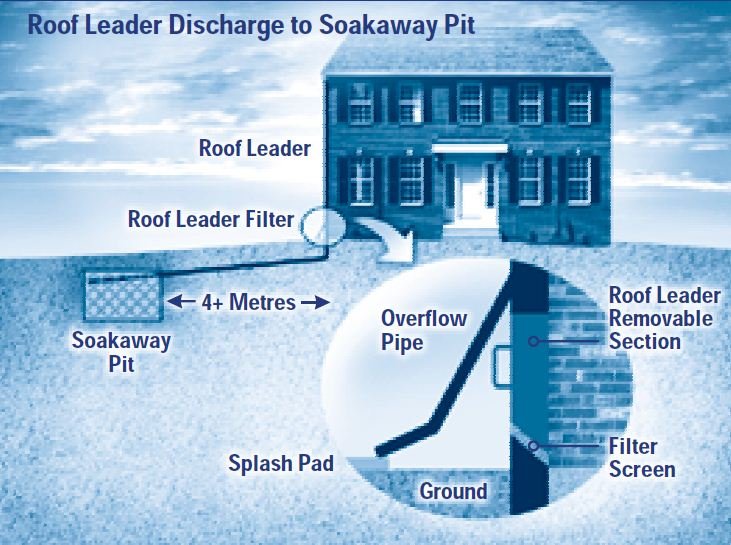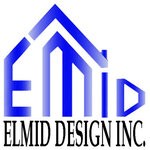Stormwater Management Design is a crucial aspect of urban planning in Oakville, Ontario. This article delves into the innovative solutions and techniques that Oakville employs to manage stormwater effectively, ensuring the city remains safe and sustainable in the face of changing climate conditions.
In the heart of Oakville, Ontario, a critical aspect of urban planning is managing the element that graces our lives in various forms: water. Specifically, stormwater – that cascade of rain and snowmelt – demands careful orchestration to avoid the perils of flooding. Understanding stormwater management in Oakville isn’t just about infrastructure; it’s about safeguarding our homes and community spaces from nature’s unpredictable moods.
[toc]
Key Takeaways
- Stormwater management is essential for protecting properties in Oakville.
- Oakville employs both minor and major storm systems for efficient water management.
- The town’s infrastructure includes a comprehensive network of pipes, catchbasins, and management ponds.
- Various local authorities and homeowners share responsibility for managing stormwater effectively.
Understanding Stormwater Management Design in Oakville
Stormwater in Oakville, much like any urban area, emerges from rainfall and snow melt. Traversing over roofs and streets, it accumulates, seeking pathways through storm drains and eventually joining the vastness of Lake Ontario. The key is directing this runoff away from our living spaces, ensuring our city’s resilience against nature’s downpours and the consequent risk of flooding.
For more details on the importance of stormwater management, visit Elmid’s Stormwater Management in Ontario.
Oakville’s Stormwater Infrastructure: A Robust Network
The minor and major storm systems are Oakville’s two-pronged approach to managing this water. The little system, consisting of smaller pipes and localized structures, handles regular rainfall, directing it from properties and streets to larger channels. In contrast, the major system comes into play during significant storm events, employing larger pipes and storage structures to manage vast volumes of water, thereby mitigating the risk of extensive flooding.
Discover more about stormwater systems in different regions at Elmid’s Stormwater Management Reports.
Challenges in Stormwater Management Design in Oakville
Interestingly, managing stormwater in Oakville isn’t without its hurdles. Recent changes in climate patterns have increased the intensity and frequency of precipitation. This evolution means that Oakville’s stormwater systems must be continually adapted and improved to keep pace with these environmental changes. Notably, different areas of Oakville face varied levels of flood risk, influenced by when they were developed. For instance, older areas, built pre-1970, were designed with a focus on quick runoff movement, often overlooking the broader impacts on natural water systems like creeks and lakes.
Learn about sustainable stormwater management in different areas at Elmid’s Stormwater Management in Oakville.
Elmid Design Inc: Engineering Excellence with PEO Certification
At Elmid Design Inc., we pride ourselves on leading engineering companies with a Certificate of Authorization from the Professional Engineers Ontario (PEO). Our team of skilled professionals is committed to delivering top-notch engineering solutions, adhering to the highest safety, quality, and innovation standards. Trust us to bring your engineering projects to life with expertise and precision that only a PEO-certified company can offer.
Looking for expert engineering services? Contact Elmid Design Inc. today and experience engineering excellence!
Stormwater Master Plan: Oakville’s Roadmap to Resilience
Now, let’s talk about something exciting – Oakville’s Stormwater Master Plan. This plan, dubbed “Be rain ready,” marks a significant step forward. It’s all about ensuring Oakville stays ahead of the curve in managing stormwater, especially considering climate change. The plan is unfolding in three phases, each targeting specific goals, from assessing the current system to identifying ways to reduce flood risk and figuring out how to fund these essential upgrades.
Check out Elmid’s Reports on Stormwater Management in Ontario for insights into regional differences in stormwater management.
Innovative Techniques in Oakville’s Stormwater Management Design
Oakville’s commitment to stormwater management is not just about conventional infrastructure; it’s about embracing innovation. The town’s approach includes a blend of traditional engineering and green infrastructure, aimed at maximizing efficiency and sustainability. From utilizing natural assets like swales and streams to integrating advanced stormwater treatment technologies, Oakville is setting a benchmark for stormwater management.
For an in-depth understanding of stormwater management techniques, visit Oakville’s official stormwater management page.
The Future of Stormwater Management Design in Oakville
Looking ahead, Oakville is poised to continue evolving its stormwater strategies. The focus is on adaptive management techniques that respond to changing climate conditions and urban development. The aim is to manage stormwater effectively and enhance the quality of life for its residents and protect the natural environment.

Stormwater Management Design in Oakville, Ontario
Imagine a downpour hammering Oakville’s streets, transforming them into rushing rivers. Roofs overflow, gutters gurgle, and catch basins struggle to contain the deluge. This isn’t just an image from a rainy day movie; it’s a potential reality for Oakville, a beautiful city nestled along the shores of Lake Ontario. But Oakville isn’t simply accepting its fate – it’s embracing innovative stormwater management design to turn the tide on this watery challenge.
The Challenge: Why Stormwater Matters in Oakville
Oakville faces a unique set of stormwater challenges. Its rolling topography and impervious surfaces like asphalt and concrete create a fast-paced path for rainwater runoff. This rapid flow can overwhelm drainage systems, flooding low-lying areas. Erosion, contaminated water, and habitat degradation are just some consequences.
The Solution: Designing for a Rain-Ready Future
This is where stormwater management design comes in. It’s not just about pipes and drains; it’s about rethinking how we build and interact with our environment. The goal is to mimic nature’s way of managing water – slowly soaking it into the ground, filtering it through vegetation, and releasing it gradually into waterways.
2. Understanding Challenges in Stormwater Management Design in Oakville
To truly understand Oakville’s stormwater management needs, we need to take a closer look at the land itself. Imagine two forces colliding: nature’s intricate design and the ever-evolving city.
Geography, Geology, and Precipitation: A Perfect Storm
Oakville sits on a gentle hill that rolls down to Lake Ontario, creating a lovely view. Due to this slope, rainwater tends to run downhill quickly. The local soil, rich in clay, doesn’t absorb water easily. Also, Ontario’s weather can be quite unpredictable. It often swings from heavy rains to long periods without rain. This mix of factors can sometimes cause problems with managing stormwater.
Urbanization’s Impact: From Roofs to Rivers
As Oakville grows, more rooftops, roads, and parking lots replace permeable surfaces like forests and meadows. This transformation dramatically increases the amount and speed of runoff, overburdening the natural drainage system. Imagine replacing a sponge with a sheet of glass – that’s how our urban landscapes can alter the way water interacts with the land.
3.Stormwater Management Design in Oakville: A Multifaceted Approach
Alright, let’s imagine this scenario: you’re suddenly caught in a heavy rain. But, don’t worry, you’re prepared with a reliable umbrella, a raincoat, and possibly even waterproof boots. This is similar to how Oakville deals with stormwater management. They use a variety of tools to manage every raindrop effectively. Now, we’re going to take a look at some of these impressive tools that keep the rain at bay:
Beyond the Pipes: LID and the Rise of Green Infrastructure
Forget clunky sewer systems – the future of stormwater management lies in Low Impact Development (LID). Imagine replacing traditional concrete jungles with green oases. That’s the essence of LID: mimicking nature’s way of managing water through various sustainable techniques.
Ponds, Swales, and Rain Gardens: Nature’s Helping Hand
Picture this: rain dances over the roof, but instead of gushing down a drain, it gracefully twirls into a rain garden brimming with colorful blooms. These strategically planted gardens soak up rainwater like thirsty sponges, reducing runoff and filtering pollutants before they reach waterways.
Swales act like little eco-ditches, channeling runoff along gently sloped landscapes, allowing it to slowly infiltrate the ground. And ponds, nestled within developments, become mini-reservoirs, holding back excess water and releasing it steadily, mimicking the rhythm of natural wetlands.
Porous Pavements and Green Roofs: Reimagining Urban Spaces
Imagine walking down a street that breathes! Porous pavements replace conventional asphalt with special materials that allow water to seep through, replenishing groundwater and reducing surface runoff. Picture buildings not just adorned with shingles, but with lush landscapes. Green roofs transform rooftops into mini-gardens, soaking up rainwater and cooling urban environments.
Detention and Retention: Holding Back the Flood
Sometimes, even the best gardens and swales need backup. That’s when detention ponds step in. These larger basins temporarily store excess water during heavy storms, releasing it gradually to prevent flooding downstream. Retention ponds, on the other hand, act like permanent lakes, capturing and storing water for irrigation or other uses, turning a potential burden into a valuable resource.
We’ve just scratched the surface of Oakville’s stormwater design toolbox. Next, we’ll zoom in on how these techniques transform homes and businesses, one raindrop at a time.
4. Residential Projects & Drywells: Your Home’s Role in Stormwater Management Design in Oakville
So, we’ve seen the big picture – the cool ways Oakville is taming the rain on a city-wide scale. But what about your own backyard? Can your home be a mini-rain warrior too? Absolutely!
Rainwater Harvesting: Turning a Downpour into a Resource
Think about it: when it rains next, you won’t be just seeing water flow away. Instead, you’ll be capturing it! Systems for collecting rainwater gather the rain from your roof and keep it in tanks. This water, which is free and clean, can be used for watering your garden, flushing toilets, or washing clothes. It’s a great deal for both your budget and the environment!
Drywell Systems: Soaking Up the Excess, One Drop at a Time
Imagine this scenario: Your driveway shines in the aftermath of a storm. Remarkably, there’s no pooling or flooding of water. This magic happens because of drywells. These are hidden, underground pits filled with gravel. They work like giant sponges, absorbing extra rainwater from places like your roof or driveway. This stops the water from overflowing into storm drains. Drywells are the unseen heroes, quietly protecting both your yard and the city’s drainage system.
Landscaping with Intention: Every Plant Plays a Part
Let’s switch from the usual lawn to something exciting! Native plants with deep roots are your new friends. These plants work like small pumps, pulling in rainwater and stopping water from running off. Also, they bring in pollinators, making a lively ecosystem right in your backyard. Imagine lovely flowers, busy bees, and joyful raindrops – it’s great for everyone!
5. Commercial and Industrial Applications: Scaling Up Sustainability
Okay, we’ve seen how houses can be mini-rain catchers, but what about the big guys? How are businesses and factories joining the stormwater dance? Buckle up, because things are about to get even greener!
Bioretention Facilities and Green Roofs: Beauty Meets Efficiency
Picture this: a parking lot, but instead of a boring wasteland of asphalt, it’s a lush oasis. That’s thanks to bioretention facilities, landscaped areas with special soil and plants that filter and soak up runoff from buildings and pavement. They’re not just pretty faces; they’re pollution-fighting powerhouses, cleaning water before it reaches streams.
Green roofs take things even higher (literally!). Imagine buildings sporting living landscapes on their rooftops. These green havens absorb rainwater and insulate buildings, saving energy and keeping everyone cool. Talk about a win-win-win for the environment, your wallet, and your comfort!
Permeable Paving and Detention Ponds: Managing Runoff, Preserving Beauty
Let’s ditch the puddles! Permeable paving is like magic – it looks like regular pavement, but it has tiny holes that let water seep through, replenishing groundwater and reducing runoff. Imagine parking lots that don’t flood after a downpour, but instead, nourish the ground beneath. Pretty neat, right?
And for those bigger storms, detention ponds come to the rescue. These larger basins act like temporary holding tanks, catching excess rainwater and releasing it slowly to prevent downstream flooding. They’re not just functional; they can also be beautiful additions to a landscape, attracting wildlife and creating peaceful green spaces.
6. Navigating the Regulations: Compliance and Permits for Stormwater Management Design in Oakville
Okay, so we’ve seen the awesome ways Oakville is taming the rain, from backyard drywells to rooftop gardens. But wait, there’s more! Just like any good party, this needs some rules to keep things flowing smoothly. That’s where regulations and permits come in.
The Ministry of the Environment, Conservation and Parks: Setting the Standards
Think of the Ministry as the big boss of water in Ontario. They set the rules for everyone, from homeowners to developers, to make sure we’re all playing nice with the precious resource called rainwater. These rules cover things like how much water can be released into storm drains, the types of materials used in stormwater systems, and how to maintain them properly.
Oakville’s Stormwater Master Plan: A Roadmap for Rain-Ready Development
Oakville isn’t just following the rules – they’re taking the lead! Their Stormwater Master Plan is like a map to a rain-ready future. It outlines the city’s long-term strategy for managing stormwater, including where new green infrastructure can be built, how to improve existing systems, and even how to educate residents about their role in the process.
Navigating the maze of regulations and permits can seem daunting, but fear not! We’ll cover all the essentials you need to know, whether you’re planning a backyard makeover or a massive development project.
Before we do that, let’s meet a team of local heroes – Elmid Design Inc. These PEO-certified engineers are masters of stormwater magic, helping Oakville residents and businesses design and build rain-ready solutions.
Elmid Design Inc.: Leading in Stormwater Management Design in Oakville
Imagine a team of water whisperers, guiding rainwater gently through landscapes and buildings. That’s Elmid Design Inc. They’re not just engineers but artists crafting beautiful and functional stormwater solutions that meet Oakville’s unique needs. From designing drywell systems for your home to planning bioretention facilities for significant developments, Elmid has the expertise and passion to turn any rainy day into a win for the environment.
Elmid understands that navigating regulations and permits can be tricky. That’s why they offer comprehensive design and consulting services, removing the hassle of rain-ready projects.
Ready to learn more about how Elmid Design Inc. can help you make your home or business a stormwater superhero? Visit their website or call them – they’re always happy to chat about rain!
7. Putting It All Together: From Permits to Ponds – Your Guide for Stormwater Management Design in Oakville
Okay, we’ve explored the cool tools and tricks Oakville uses to manage rainwater, from rooftop gardens to neighborhood ponds. But maybe you’re thinking, “Hold on, this sounds great, but how do I actually make my home or business part of the solution?” Don’t worry, we’ve got you covered!
Permits Made Easy: Demystifying the Rain-Ready Process
Think of permits as the backstage pass to Oakville’s stormwater party. They ensure your project meets the city’s standards and helps keep our water clean and flowing. But fear not, navigating the permit process isn’t as scary as it sounds!
For smaller projects like rain barrels or drywells, you might just need a simple notification to the city. For larger projects like bioretention facilities or green roofs, a formal permit application is required. But don’t fret, Elmid Design Inc. can help you every step, from understanding the requirements to filling out the paperwork.
Elmid Design Inc.: Your Partner for Stormwater Management Design in Oakville
Remember those water whisperers from before? Elmid Design Inc. is your one-stop shop for all things stormwater in Oakville. They’re not just permit pros; they’re design wizards, crafting solutions that fit your needs and budget. Whether you’re a homeowner dreaming of a rain garden or a developer planning a green-roofed marvel, Elmid can guide you through the process, from initial ideas to final permits and construction.
Now, let’s dive into some frequently asked questions about Oakville’s stormwater solutions! We’ll clear up any rain-related confusion and get you on the path to a more sustainable future.
8. FAQs: Your Stormwater Management Design in Oakville
Q: I’m a homeowner. What can I do to help manage stormwater?
A: Lots! Rain barrels, drywells, and native plant landscaping are all great ways to soak up rainwater before it reaches the storm drains. Elmid Design Inc. can help you choose the right solution for your property.
Q: I’m a business owner. How can I make my building more rain-ready?
A: Green roofs, bioretention facilities, and permeable paving are fantastic business options. They can help manage runoff, reduce your water bill, and even improve the look of your property. Elmid Design Inc. can design and implement custom solutions that fit your needs.
Q: How much do stormwater solutions cost?
A: The cost varies depending on the size and complexity of the project. However, many stormwater solutions offer long-term benefits like reduced water bills and improved property value, making them a worthwhile investment. Elmid Design Inc. can provide a free consultation to discuss your budget and options.
Q: What are the benefits of sustainable stormwater management?
A: The benefits are endless! It reduces flooding, protects water quality, creates green spaces, and even helps combat climate change. By working together, we can create a rain-ready Oakville that’s healthy, beautiful, and resilient.
Q: Where can I learn more?
A: Elmid Design Inc. is your local resource for all things stormwater! Visit their website, give them a call, or attend one of their informative workshops. You can also learn more about Oakville’s Stormwater Master Plan on the city’s website.
Remember, every drop counts! By taking small steps like planting native plants or installing a rain barrel, you can solve Oakville’s stormwater challenges. Let’s work together to create a rain-ready city that thrives for future generations!
Geographic Locations That We Service:
Our Licensed Professional Engineers specializing in Engineered Stormwater Management Report and Site Grading Plans offer the best-engineered site grading plan, lot grading and erosion plan, and drainage plan to obtain site plan approval and building permits in Ontario, including a wide range of municipalities. Each area boasts unique features and requirements, making our tailored approach essential for success.
Toronto And Surrounding Areas
In the vibrant heart of Ontario, we service Toronto (City of Toronto) and surrounding areas. Additionally, we cover Oshawa (City of Oshawa), Pickering (City of Pickering), and Clarington (Municipality of Clarington). Furthermore, our expertise extends to Ajax (Town of Ajax), Whitby (Town of Whitby), Brock (Township of Brock), Scugog (Township of Scugog), and Uxbridge (Township of Uxbridge).
Halton Region
Moving to the Halton Region, our services encompass Burlington (City of Burlington) and Halton Hills (Town of Halton Hills). Also included are Milton (Town of Milton) and Oakville (Town of Oakville).
Peel Region
In the Peel Region, we provide services in Brampton (City of Brampton), Mississauga (City of Mississauga), and Caledon (Town of Caledon).
York Region
Our services in the York Region cover Vaughan (City of Vaughan), Aurora (Town of Aurora), and East Gwillimbury (Town of East Gwillimbury). We also cater to Georgina (Town of Georgina), Markham (City of Markham), Newmarket (Town of Newmarket), Richmond Hill (City of Richmond Hill), Whitchurch-Stouffville (Town of Whitchurch-Stouffville), King (Township of King), and Bradford-West Gwillimbury (Town of Bradford-West Gwillimbury). Each municipality here offers a distinct setting, requiring our specialized approach.
Other Southern Ontario Cities And Towns
We also serve many other cities and towns in Southern Ontario. These include Hamilton (City of Hamilton), St. Catharines (City of St. Catharines), Niagara on the Lake (Town of Niagara on the Lake), Brant (County of Brant), Cambridge (City of Cambridge), Kitchener (City of Kitchener), Waterloo (City of Waterloo), and Woodstock (City of Woodstock). Furthermore, we operate in Guelph (City of Guelph), Centre Wellington (Township of Centre Wellington), Shelburne (Town of Shelburne), Orangeville (Town of Orangeville), New Tecumseth (Town of New Tecumseth), Essa (Town of Essa), Collingwood (Town of Collingwood), Wasaga Beach (Town of Wasaga Beach), Barrie (City of Barrie), Midland (Town of Midland), Orillia (City of Orillia), Ramara (Town of Ramara), Minden Hills (Town of Minden Hills), North Kawartha (Town of North Kawartha), Kawartha Lakes (City of Kawartha Lakes), Peterborough (City of Peterborough), Selwyn (Town of Selwyn), and Brighton (Municipality of Brighton).
We'd love to hear from you
Get in touch with us
Tell us about yourself by completing the form below. Your information is always kept confidential.
Reach us through
-
13025 Yonge St, Unit # 201G, Richmond Hill, ON, L4E 1A5 - +1 647 745 4507
- info@elmid.ca
Send us a Message
Elmid Design Inc.
Suite 201G,
Email: info@elmid.ca
URL: https://www.elmid.ca/
| Monday | 9:00 AM - 5:00 PM |
| Tuesday | 9:00 AM - 5:00 PM |
| Wednesday | 9:00 AM - 5:00 PM |
| Thursday | 9:00 AM - 5:00 PM |
| Friday | 9:00 AM - 5:00 PM |
| Saturday | Closed |
| Sunday | Closed |





